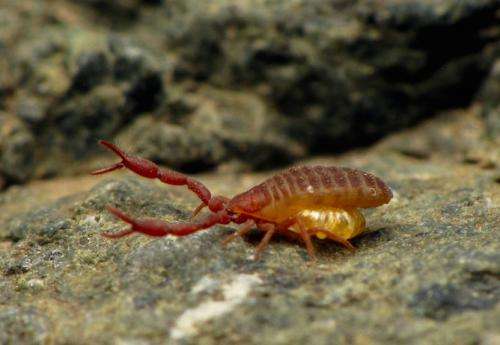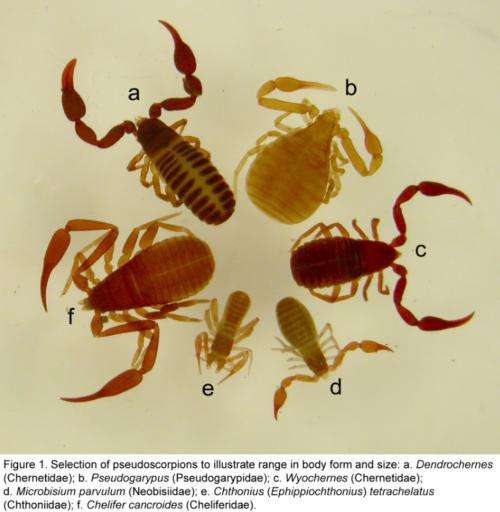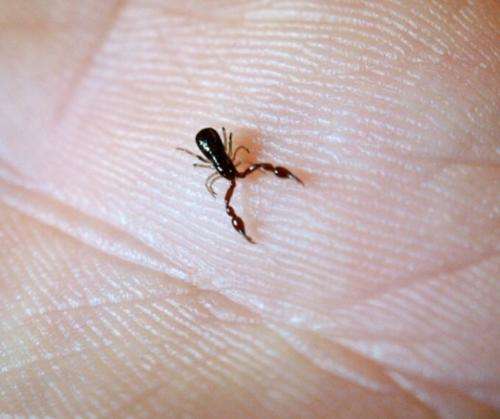Explainer: What is a pseudoscorpion?

Pseudoscorpions are commonly known as "false scorpions" or "book scorpions". They belong to the Arachanida class, and, as the name suggests, they are like scorpions but without a stinger on their back end.
In 2002 there were more than 3,000 known species of Pseudoscorpions. Compare that to the Carnivora order of mammals, which include walruses and wolves, that has fewer than 300 species. Despite this, pseudoscorpions are seldom studied and have received relatively little attention from biologists.
These arachanids have an impressively long history, known from fossils going back to the Devonian Period, 380 million years ago. Their body plan hasn't changed in quite some time. These arachnids have also been found in fossilised tree resins (amber) from around 100m years ago .
Perhaps one reason these pseudoscorpions are poorly known is because they are easily missed: the largest pseudoscorpions don't grow to more than 10 mm in length, and most are much smaller than that. However, one cosmopolitan species often shows up in people's homes, often in older houses and in damp areas of houses. That species is Chelifer cancroides, first described in 1758.
They are wingless, but pseudoscorpions are found all around the globe. I have found them under rocks in areas well north of the Arctic circle. Their success at moving large distances is mostly attributed to their ability to hitch a ride by catching onto other animals, a process known as phoresy.

Although they are predators, pseudoscorpions don't bite humans – they are tiny, and just don't have the strength to pierce your skin. They tend to feed on tiny little invertebrates, including caterpillars, book lice, and other soft-bodied critters. Their venom glands are located on their giant, over-sized pedipalps (arm-like part that extend from the body). They catch their prey, immobilise it, and then chew on and suck out the insides of their prey, using their chelicerae (teeth-like structures in the mouth). In fact, pseudoscorpions are our friends, as they are known to prey on species such as Varroa mites, a dreaded pest of honey bees.
It is not easy to find pseudoscorpions in nature, as their distribution tends to be uneven. Some good habitats include rotten logs, leaf-litter, and such organic debris. However, I do get lucky from time to time:
Pseudoscorpions don't have sex: sperm transfer is indirect. Males deposit a spermatophore – a package of sperm – on the substrate somewhere and the females must come in contact with that package in order for fertilisation to occur. In some species, males will do dances with females and help her find the spermatophore.

However, in other species, males have never been found. For example, we collected hundreds of specimens of Microbisium confusum without finding a single male. It is therefore assumed some species may be parthenogenetic, which means embryos can grow and develop without fertilisation.
These critters may have been first described by Aristotle, perhaps as they were wandering among scrolls, hence the name "book scorpion". But if the idea that fake scorpions are plaguing your bookshelf scares you, you can always think of them as biologist Robert Hooked described them in Micrographia: harmless little "land-crabs".
Provided by The Conversation
This story is published courtesy of The Conversation (under Creative Commons-Attribution/No derivatives).
![]()




















